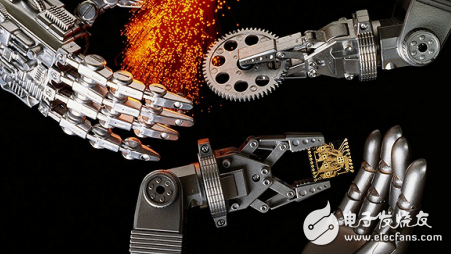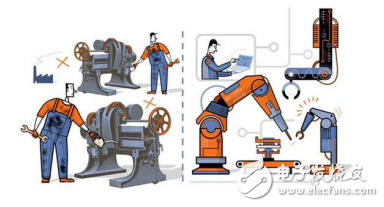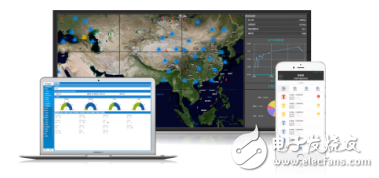At the beginning of the 17th year, the release of the "13th Five-Year Plan for Energy Saving and Emission Reduction" reaffirmed the central government's efforts to continue to increase emission reductions, improve clean energy use, implement industrial energy conservation, improve environmental monitoring systems, and strengthen environmental supervision. The determination to check the intensity, energy saving and emission reduction is imperative.
How far is “Made in China 2025†from “Industry 4.0�
In 2016, everyone's focus is on Industry 4.0, smart manufacturing, China has become a major manufacturing country in the world, supply-side reform, and the integration of the two is the biggest bottleneck encountered by the industry. However, there is no doubt that in the process of industrialization, it is inevitable to experience the imbalance between economic development, resource utilization and environmental protection. The continuous development of a series of energy-saving policies and energy-saving technologies in Germany since the 1990s has formed a relatively mature and healthy Industrial 4.0 development model.

For China with industry as its core productivity, the serious consequences of energy consumption and pollution emissions have been highlighted in recent years. The energy consumption per unit of product is higher than the world's advanced level, and the pollution caused by unit output value is far more than that of developed countries. As a long-term goal, energy conservation and emission reduction must be sustainable and improve the manufacturing level from the root. In the past 2015-2016, the industrial Internet of Things is developing rapidly. From small manufacturing companies to international manufacturing giants, the industrial Internet of Things is gradually changing. This is not only the embodiment of “manufacturing + the Internetâ€, but people are beginning to control production. Manufacturing, no longer only focus on output, step by step from focusing on “quantity†to focusing on “qualityâ€.
China's energy status has led to coal becoming an industrial black gold, accounting for a large share of the energy consumption structure. Coal to oil and coal to electricity is also a test of domestic manufacturing processes. More companies are beginning to pay attention to energy-saving technologies, scientific management through Internet means, optimization of energy allocation, and the first step in industrial energy conservation.
The margin of energy conservation and emission reduction is high, and where do companies go?
In the past few years, most of the domestic enterprises that responded to energy conservation and emission reduction started from “emission reductionâ€. On the one hand, they did not affect their own production schedule control costs. On the one hand, they were free to circulate among government supervision departments. If energy-saving emission reduction can't let enterprises see the transformation results, but only blindly reduce production and reduce emissions, then in the end it can only be a "slapstick." With the release of the new program, the trend of industrial energy conservation has become clear, and there will be more policies and investments to promote the implementation of energy-saving technologies and energy-saving products.

Compared with other countries in the world, domestic Internet of Things technology started earlier and developed rapidly. It is now an important member of the International Internet of Things Standards Research Group. Compared with traditional energy-saving and emission-reducing technologies, the Internet of Things technology has the advantages of ubiquitous sensing, accurate and flexible data collection, real-time monitoring, early warning models, and data analysis. The emergence of industrial Internet of Things has brought a very favorable opportunity for enterprise transformation. It has emerged from the “emission reduction†of traditional energy consumption and uses virtual network technology to complete industrial integration and manufacturing upgrade. It can not only help enterprises achieve both the improvement of efficiency and energy saving, but also is a favorable starting condition for future market competition.
How can the Industrial Internet of Things help industrial energy conservation?
The use of information and data is the best embodiment of the company's progressive value:
1. Energy conservation and emission reduction work puts high demands on the recycling of resources. Manufacturers can obtain all the detailed information of the production process through the sensing equipment, including the pollution index, whereabouts, and processing results of the emissions. The platform management and configuration process rationally allocates resources, adjusts through feedback data, and manufactures the whole process of production through scientific management combined with energy-saving technologies.
2. Fine management of production consumption and output. Through the industrial network system, we can monitor the working data of all devices in real time, including current, voltage, power consumption and status. Identify the main energy-consuming equipment through data difference, carry out energy-saving retrofits in a targeted manner, and compare the data before and after the transformation to evaluate the energy-saving retrofit effect.

3. Efficient energy management: In the past 16 years, the Intellectual Property Association has helped many enterprises to achieve contract energy management. In response to the transformation of enterprises to the "Internet +" management model, Industrial Internet of Things has undoubtedly become the best choice for enterprises. Through the "digital management platform", we can not only comprehensively manage the synergy of all links in production, improve production efficiency, but also accurately grasp production resource data, market use data, rental data, etc., so that energy management becomes an organic whole and enhances the benefits of enterprises.
4. The organic combination of industrial Internet of Things and energy saving and emission reduction will be a huge opportunity in the next decade. We look forward to helping China's industry achieve real energy efficiency through IoT applications under the guidance of the “Made in China 2025†target.
Industrial Internet of Things has a long way to go
As far as manufacturing is concerned, many of the business problems we have served in the past 16 years have focused on factory production, equipment use efficiency is low, and there is a huge contradiction between process and manufacturing costs. With the deep integration of industrialization and informatization, we can use the industrial IoT platform to collect and analyze production energy consumption information, identify problems, rationally manage and improve production efficiency, and achieve scientific management of production.
In this process, we also need to constantly explore new applications, solve practical problems in industrial production, and let enterprises benefit from energy-saving transformation.
A quality manufacturer of Platform Scale sensors and accessories in China. Floor scale, a kind of weighing instrument used in life. It is suitable for logistics weighing, farm weighing, trading weighing, bulk cargo weighing, etc.
Shear beam sensor, single-point sensor.China Load Cell,Sensor For Floor Scale,Made In China,
Shear Beam Sensor,Platform Scale
Load cell, shear beam sensor, sensor for floor scale, platform scale
Ningbo Santwell Imp & Exp Co.,Ltd , https://www.santwell.com